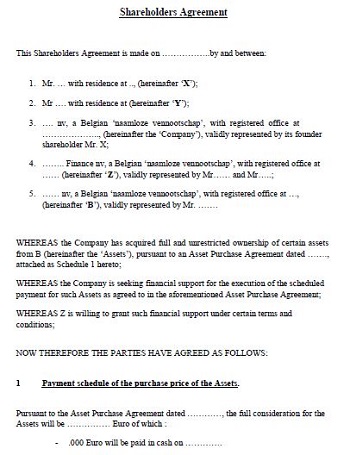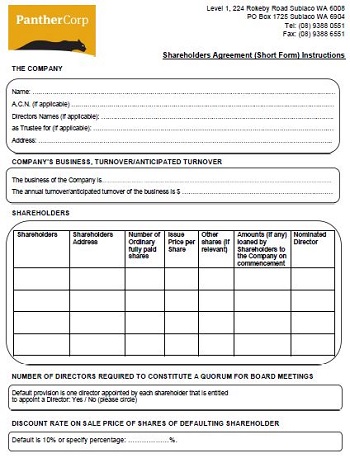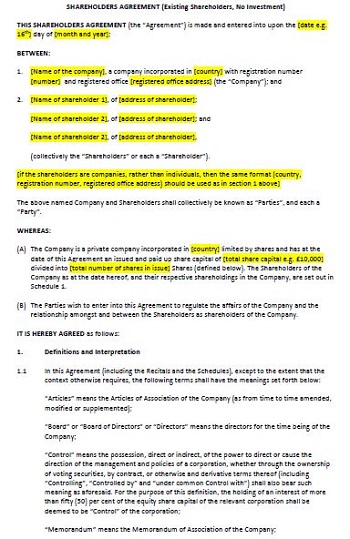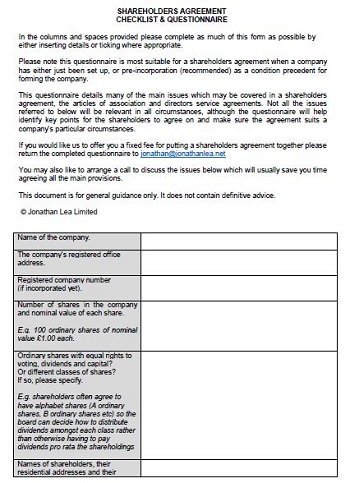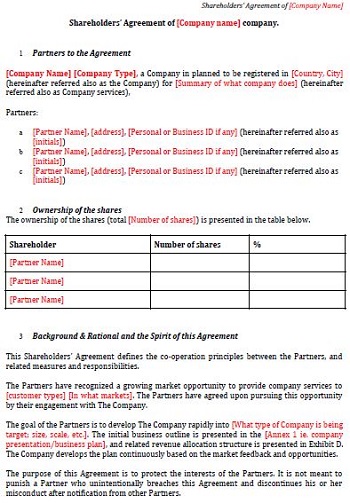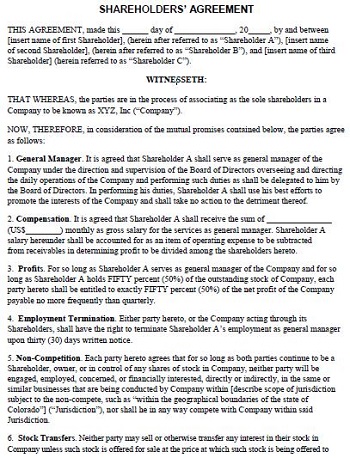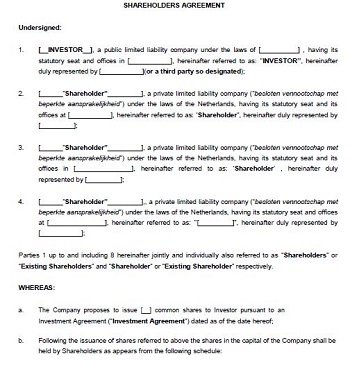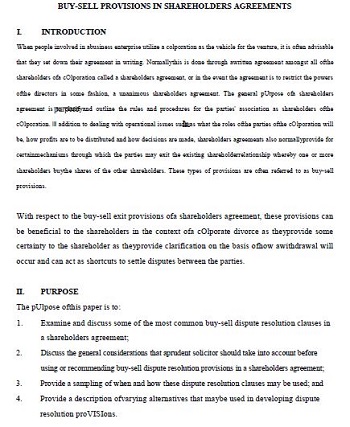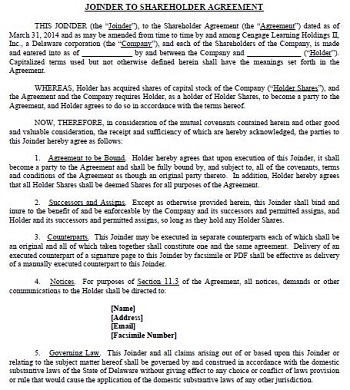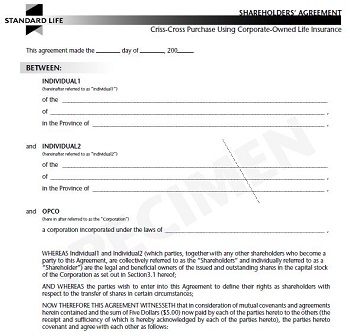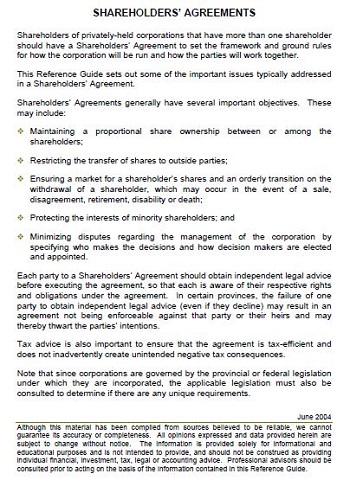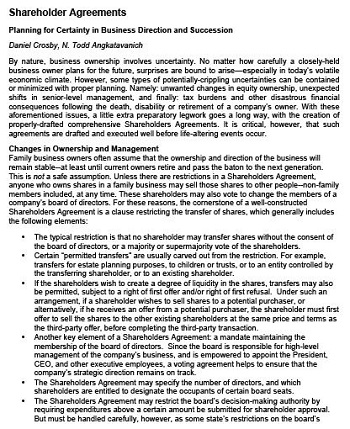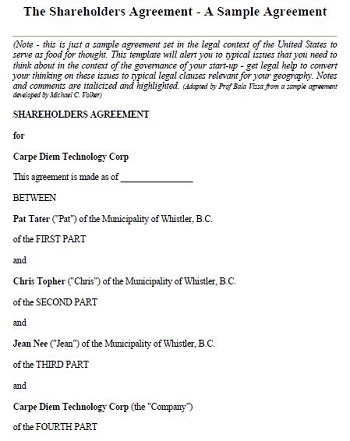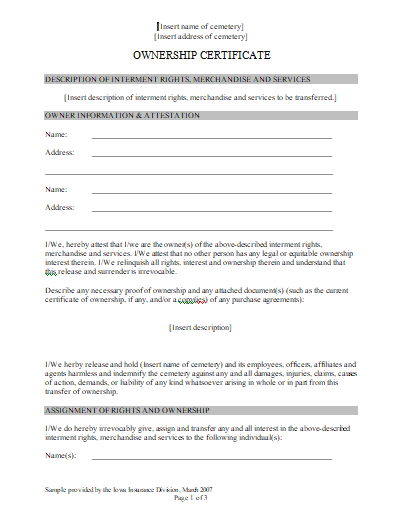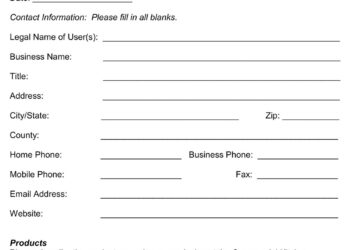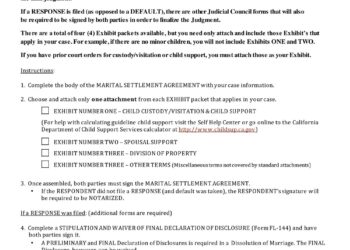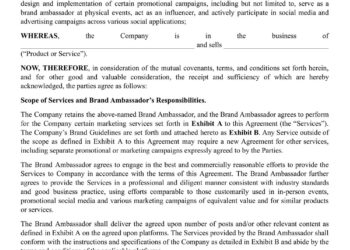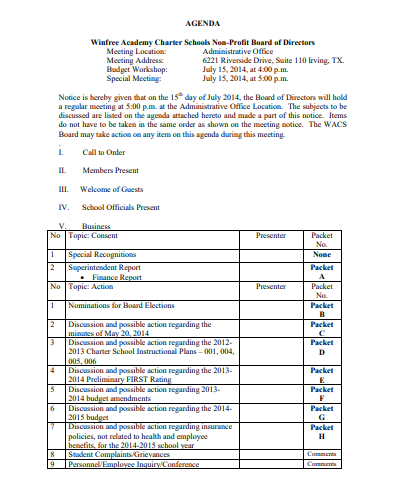In the corporate world, shareholder agreements play a critical role in defining the rights, responsibilities, and obligations of shareholders within a company. In this way, well-structured shareholder agreement templates help to establish a solid foundation for shareholder relationships, protect the interests of all parties involved, and outline the governance and decision-making processes. Browse our collection and download the free shareholder agreement templates in PDF and Word format.
A comprehensive shareholder agreement format serves as a framework for decision-making, ownership transfers, and dispute resolution among shareholders. Using a shareholder agreement template can provide a standardized format that simplifies the drafting process. In this article, we will explore the importance of shareholder agreements, the benefits of using a template format, and the key elements that should be included in such agreements.
Shareholder Agreement Template
Shareholder Agreement Template |
Shareholder Agreement Sample |
Shareholder Agreement Short Form |
Shareholder Agreement No Investment |
Company Shareholder Agreement Template |
Sample Shareholder Agreement For Startup |
Shareholder Agreement Checklist |
Shareholder Agreement of Company |
Sample Shareholder Agreement PDF |
Shareholder Agreement Format |
Example of a Shareholder Agreement |
Series Investment And Shareholder Agreement |
Investor Shareholder Agreement Template |
Buy-Sell Provision in Shareholder Agreement |
Nominee Shareholder Agreement Template |
Joinder to Shareholder Agreement Template |
Standard Life Shareholder Agreement |
Startup Shareholder Agreement Template |
Shareholder Agreement For Business |
Sample Agreement For Shareholder |
What is a Shareholder Agreement?
A shareholder agreement is an essential document that helps to define the rights and obligations of shareholders in a company. It is a contract between the shareholders, setting forth the terms and conditions of their relationship and establishing a framework for corporate governance. The shareholder agreement covers various aspects of shareholder relationships, including share ownership, decision-making processes, transfer of shares, dispute resolution, dividend distribution, voting rights, and restrictions on shareholders’ actions. Shareholder agreements are valuable tools for protecting the interests of shareholders and promoting transparency and fairness within the company. They help prevent conflicts and provide mechanisms for resolving disputes, facilitating effective decision-making, and ensuring the long-term success of the business.
Benefits of a Shareholder Agreement
A shareholder agreement offers a multitude of benefits for both the shareholders and the company itself. This legally binding document outlines the rights, obligations, and expectations of shareholders, providing a solid foundation for their relationships within the company. By establishing clear guidelines, promoting fairness, and addressing important matters such as decision-making, ownership transfers, and dispute resolution, shareholder agreements play a crucial role in protecting shareholder interests and ensuring smooth corporate governance. A shareholder agreement offers numerous benefits for both the shareholders and the company itself. Here are some key advantages of having a shareholder agreement in place:
- Clarity and Certainty: A shareholder agreement provides clarity by clearly defining the rights, obligations, and expectations of shareholders. It sets out the rules and procedures for decision-making, profit distribution, share transfers, and other important matters. This clarity reduces misunderstandings and disputes among shareholders, promoting a harmonious and well-functioning business environment.
- Protection of Shareholder Interests: Shareholder agreements protect the interests of all parties involved. They establish safeguards to prevent unfair treatment, dilution of share ownership, or oppressive actions by majority shareholders. Minority shareholders, in particular, benefit from having their rights and protections clearly outlined in the agreement.
- Governance and Decision-Making: Shareholder agreements define the mechanisms for decision-making within the company. They outline voting rights, quorum requirements, and procedures for resolving deadlocks. By providing a structured framework for governance, the agreement ensures that important decisions are made efficiently and in accordance with the shareholders’ intentions.
- Flexibility and Customization: Shareholder agreements can be tailored to the specific needs and circumstances of the company. They allow shareholders to customize provisions according to their preferences, industry-specific requirements, and long-term goals. This flexibility ensures that the agreement aligns with the unique characteristics of the business and the shareholders’ collective vision.
- Dispute Resolution: A well-drafted shareholder agreement includes provisions for resolving disputes among shareholders. It may include mechanisms such as mediation, arbitration, or a specified jurisdiction for legal action. Having predefined dispute resolution processes helps mitigate conflicts and provides an efficient means of resolving disagreements, reducing the likelihood of costly and time-consuming litigation.
- Share Transfer Mechanisms: Shareholder agreements address the transfer of shares, including restrictions, rights of first refusal, or buy-sell provisions. These mechanisms help maintain stability and control over the ownership structure of the company. They provide a framework for orderly transfers and protect shareholders from unwanted or inappropriate third-party ownership.
- Confidentiality and Non-Compete: Shareholder agreements often include provisions to safeguard the company’s confidential information and trade secrets. They may also impose restrictions on shareholders from competing with the company during their tenure and for a certain period thereafter. These provisions protect the company’s intellectual property and help maintain its competitive advantage.
- Succession Planning: Shareholder agreements can address succession planning, particularly in closely held companies or family businesses. They outline procedures for the transfer of shares upon retirement, death, or incapacitation of a shareholder, ensuring a smooth transition of ownership and management.
Key Elements in a Shareholder Agreement Template
While specific shareholder agreement templates may vary depending on the company’s needs and industry, there are several key elements that should be included:
1. Introduction and Definitions
This section serves to introduce the agreement, identifying it as a legally binding document that governs the relationships and rights of shareholders within the company. It establishes the context and sets the tone for the entire agreement. Additionally, the definitions portion of this template element defines key terms and concepts used throughout the agreement, ensuring consistency and clarity in the interpretation of the document. By including an Introduction and definitions section in the shareholder agreement template, parties can establish a common understanding of the agreement’s purpose and terminology, creating a solid foundation for the rest of the document.
2. Shareholder Rights and Obligations:
This section of the template establishes the specific privileges and entitlements that shareholders possess, such as voting rights, dividend distributions, and participation in decision-making processes. It also delineates the obligations that shareholders must fulfill, including financial commitments, capital contributions, and adherence to corporate governance principles.
3. Share Transfers and Restrictions
Share Transfers and Restrictions in a shareholder agreement are crucial for addressing procedures and restrictions related to the transfer of shares within the company. This section establishes guidelines and provisions that govern share transfers, ensuring a fair and orderly process. It may include mechanisms such as pre-emption rights, granting existing shareholders the opportunity to purchase shares before they are offered to external parties. It provides a framework for regulated share transfers, preventing undue dilution of ownership and ensuring that all shareholders have a fair opportunity to participate in transactions involving shares.
4. Decision-Making Processes
By including a comprehensive “Decision-Making Processes” section in a shareholder template, all parties involved can have a clear understanding of how decisions are made, the rights and responsibilities of shareholders, and the procedures to be followed in various scenarios. This promotes effective governance and minimizes potential conflicts or misunderstandings.
5. Dispute Resolution Mechanisms:
Dispute Resolution Mechanisms” is an important element to include in a shareholder agreement. This section outlines the procedures and mechanisms for resolving disputes among shareholders or between shareholders and the company. It helps provide a clear and structured framework for addressing conflicts and promoting amicable resolutions.
6. Confidentiality and Non-Compete Clauses
Including a comprehensive “Confidentiality and Non-Compete Clauses” section in a shareholder agreement helps protect the company’s confidential information and competitive advantage. It sets clear expectations for shareholders regarding the handling of sensitive information and their activities after their involvement with the company. By incorporating these clauses, the company can safeguard its intellectual property, maintain its market position, and mitigate the risk of harm from competitive activities.
7. Exit Strategies
This section outlines the options and mechanisms available to shareholders when they wish to exit their investment in the company. It helps provide clarity and a structured framework for facilitating an orderly transition.
8. Termination and Governing Law
Shareholder agreement outlines the circumstances under which the agreement may be terminated and specifies the governing law that will apply to the agreement
9. Miscellaneous Provisions
This section provides clarity and guidance on the process of concluding the shareholder agreement and the applicable legal framework. Termination provisions may include events such as the liquidation or dissolution of the company, unanimous agreement among shareholders, or breach of the agreement’s terms.
What You Need to Know About a Shareholder Agreement
If you are starting a business with multiple owners, it is essential that you have a shareholder agreement. A shareholders agreement is a legal document that outlines the rights, responsibilities, and obligations of each owner. It is crucial to tailor the agreement to the specific needs and circumstances of the business and seek legal advice to ensure compliance with applicable laws and regulations. Overall, understanding the importance and key elements of a shareholder agreement is vital for shareholders to effectively manage their rights and obligations and foster a stable and prosperous business environment.
Confidentiality and Non-Compete Clauses
Confidentiality and non-compete clauses are crucial components of a shareholder agreement. These clauses ensure the protection of the company’s confidential information, trade secrets, and competitive advantage. They outline the obligations of shareholders to maintain the confidentiality of sensitive information belonging to the company and restrict their ability to engage in competitive activities that could harm the company’s interests. These clauses help preserve the integrity of the business and safeguard its intellectual property.
Termination and Governing Law
The termination and governing law provisions in a shareholder agreement determine the circumstances under which the agreement may be terminated and specify the governing law that will apply. These provisions provide clarity and guidance on how the agreement can be concluded and the legal framework that will govern its interpretation and enforcement. They address the events or breaches that may lead to termination and establish the choice of law that will dictate the resolution of any disputes arising from the agreement.
Miscellaneous Provisions
The miscellaneous provisions section covers various additional clauses and provisions that may not fit explicitly within other sections but are important to address. This section may include provisions related to the entire agreement, amendment and waiver procedures, severability of provisions, notice requirements, assignment of rights and obligations, counterparts, and interpretation rules. These provisions ensure that the shareholder agreement is comprehensive, and consistent, and provides clear guidelines for the parties involved.
Conclusion
Creating a shareholder agreement is an important step in establishing your business legally and protecting all parties involved in running it successfully. Your agreement should include provisions that protect both majority and minority shareholders in case of unexpected changes like the death or sale of shares, as well as details about ownership structure, voting rights, and dispute resolution methods. With this information, you’ll have everything you need to create an effective agreement tailored specifically to your business’s needs.
Reference Link



